NOTE: This article is OUT OF DATE! The updated version can be found here: What’s In My Flight Bag: 2019 Edition
When you’re in a car, if you forgot something you can always pull over and figure it out. When you’re in an airplane, you’ve got what you’ve got. That gear becomes even more important when things go wrong in the air and you need a backup or a way to troubleshoot the issue. Part of the challenge of flying is making sure that you have all the gear you need for your flight when you leave the house, and to make sure that it includes some good emergency equipment as well as your normal flying gear. Over the last year I’ve put together a pretty nice flight bag for personal flying in Texas, and I figured it would be a good idea to open it up and show what’s inside.
The bag itself is a 5.11 Rush 12 backpack, which I reviewed yesterday. I chose it for the internal capacity as well as the ability to customize the bag with MOLLE pouches, and I’m very happy with its performance so far.
The front pocket is all about flat stuff, since that’s a constraint of the dimensions of the pouch itself. I’ve tried to load this up with either stuff that I’ll definitely need during the flight (like the keneeboard) or stuff that I’d need in an emergency.
Here’s what I have loaded in there:
- Nexus 9 Tablet
- Current San Antonio sectional
- Jeppesen IFR Kneeboard
- Backup Cessna 172 Checklist
- KMASHI 10,000 mAh USB battery (for USB devices)
- Leatherman Style PS Multitool (TSA approved)
- USB cables for charging devices
- Pilot G2 Pens and mechanical pencil
On the front of the bag right above that pocket, there’s another zippered compartment. This one is very small, but extremely easy to find. So I’ve put some things in there that I’d either need to find quickly in the dark or that are very small and would be lost elsewhere.
In order of importance:
- E2D LED Defender flashlight
- Pulse oximeter
- Dramamine (less drowsy version)
- Lip Balm
The reason I carry the Dramamine these days is pretty self explanatory. I started carrying the flashlight after my alternator failed during a night flight. I also started carrying something else, something that I decided was important enough to put in a pouch I attached to the outside of the bag so I could find it in an emergency.
A radio. Specifically, a Yaesu FTA550 handheld air-band transceiver. After that flight, I realized that the thing which freaked me out the most was the possibility of losing communications with the ground. The FTA550 gives me the ability to maintain communications in the air, and also has the ability to track a VOR or an ILS signal if I should lose that equipment as well. Possibly most important: there’s an adapter right in the box for the standard aviation headset plugs, so I can use the headset with the radio if the need arises.
Moving over to the other side of the bag is a pouch that is used every single time I go flying, but not really an “emergency” item. I love my MyGoFlight tablet mount, and just because its a little bulky and awkward I decided to put it in its own pouch on the side of the bag. It fits perfectly, with room to spare.
Right above that is a general purpose pouch commonly referred to as a “dump pouch.” With most of the internal space in the bag stuffed to the rafters, there isn’t really anywhere to put any extra items that might be needed. Or a water bottle, which is required equipment in the heat of the Texas summer. A small pouch like this folds away nicely and doesn’t take up much room, but when you need it it can be a lifesaver.
Speaking of lifesavers, there’s one more small compartment on the top of the bag.
Right behind the carry handle, there’s a compartment that looks like it was designed for sunglasses. Mine don’t fit, so I filled it with something else: air sickness bags. Again, for obvious reasons. When you need one, you really need one, and having it easy to find and readily at hand is essential.
I suppose we’ve put it off long enough — let’s look inside the main compartment.
There’s two sections here, so let’s start with the bulky stuff first. There’s a couple things sloshing around in that main compartment, most of which are used every flight.
- Zippered portfolio with paperwork (logbook, insurance, etc)
- David Clark H10-13.4 Headset
- Costa Del Mar Wingman sunglasses
- Jeppesen vJeppShades
- 2-Person Survival Kit of my own design (more on that in another article)
In addition to the main compartment, there’s some mesh zippered pouches in there to keep things organized.
In those pouches:
- XGPS150A Bluetooth GPS
- ASA Fuel Tester
- GoPro Audio Adapter for Airplane COMM Systems
- Backup power supply for the Yaesu handheld radio
That about covers everything that I use on a daily basis, or have available in case of emergency. But there’s one more pocket on the rear of the bag (see the review for the position) that has a couple more items.
This is the stuff I carry for check ride and training purposes. I’d love if I could just use Garmin Pilot instead of an E6B to do my trip planning, but alas the instructors and checkride pilots want to see it done the old fashioned way. Which makes sense, I admit.
- ASA Flight Planning workbook
- ASA E6B flight computer
- ASA Plotter
- Sectionals outside my flight area
All said and done, the bag weighs 15 pounds on the dot. I think I’ve crammed enough gear and gadgets in there to make any flight and deal with any emergency — except maybe an in-flight fire. But, as always, I’m still constantly looking for new and improved gear to add to the bag or replace existing gear. I wonder what my bag will look like in 5 years . . .
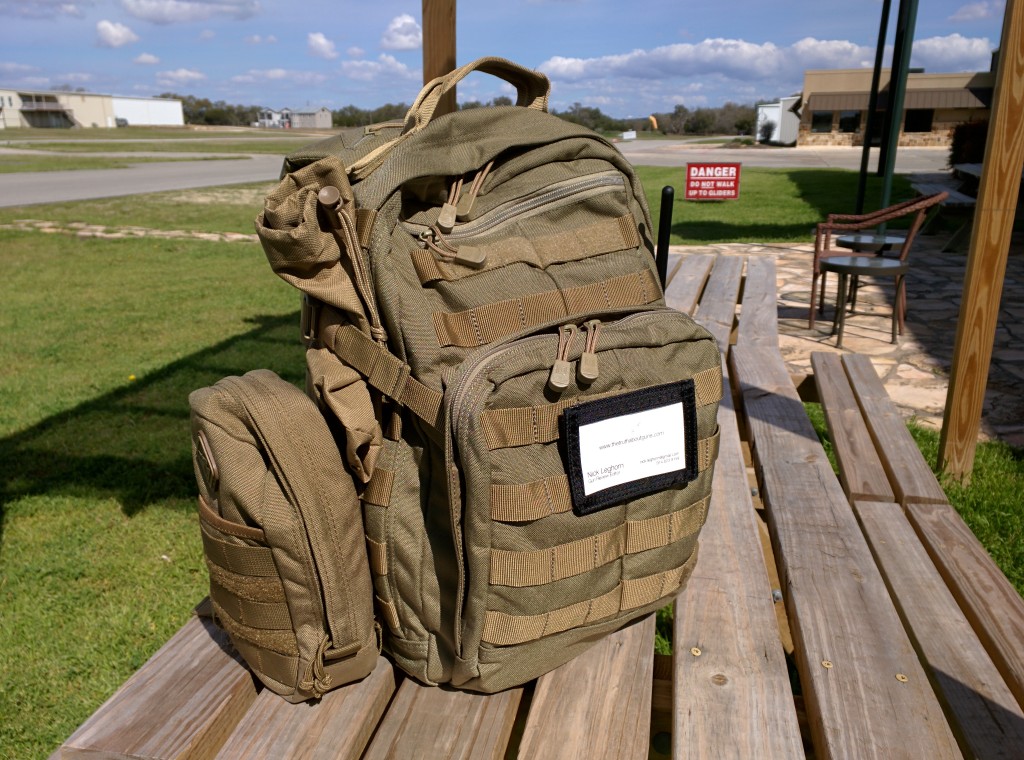
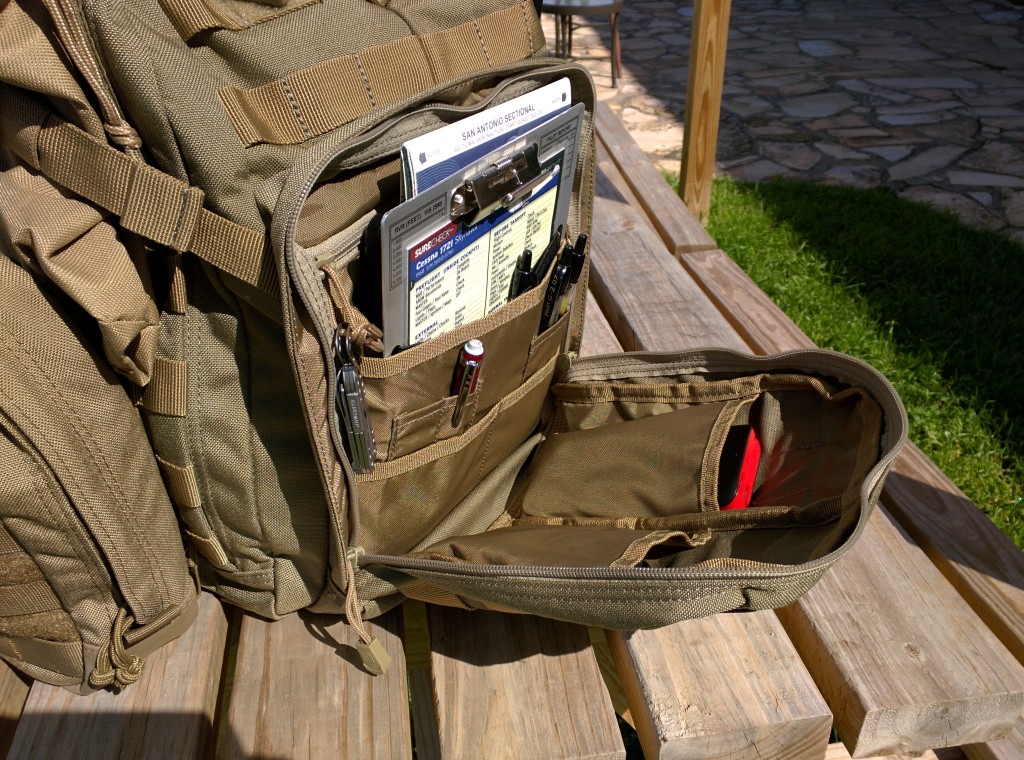
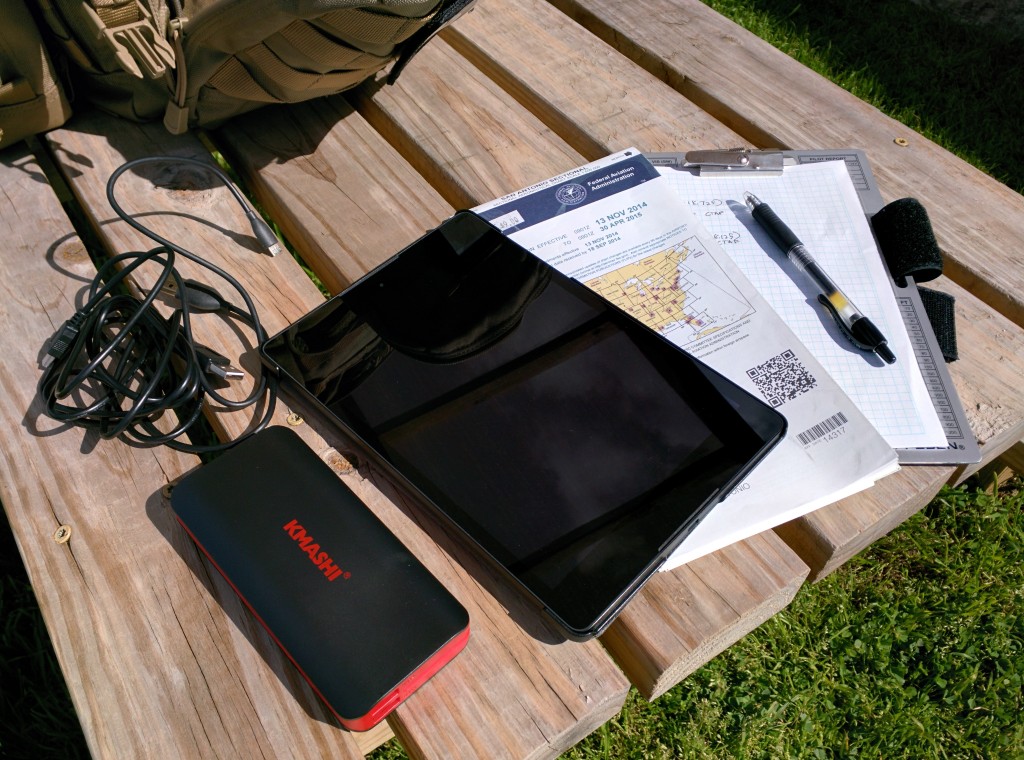
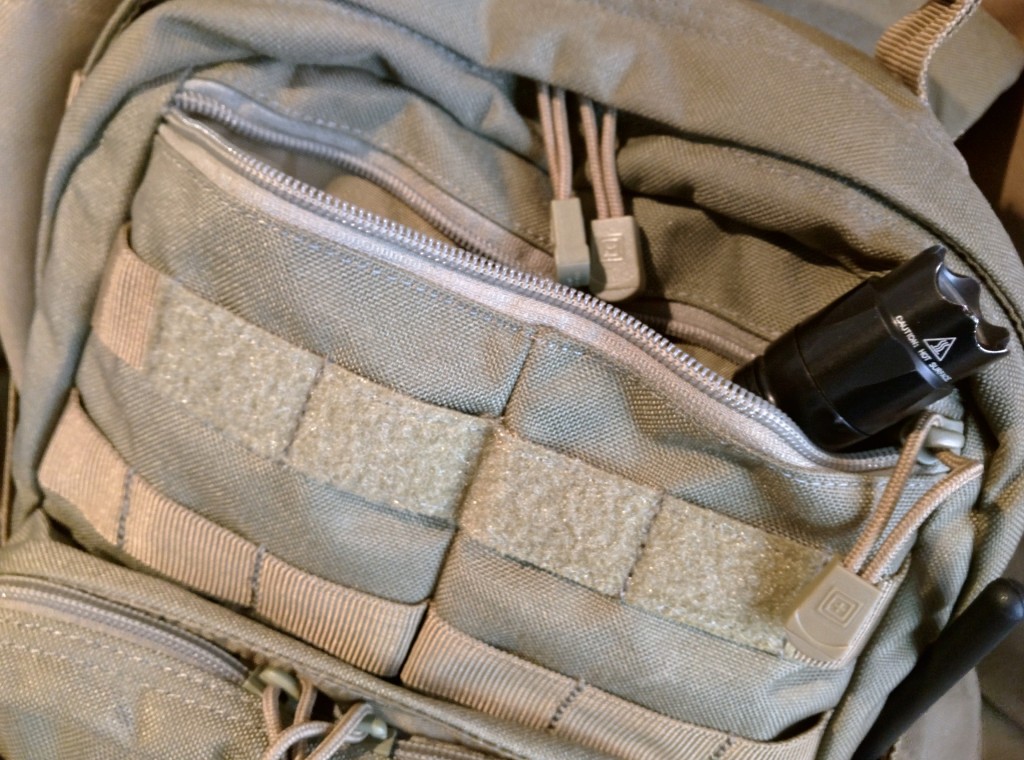
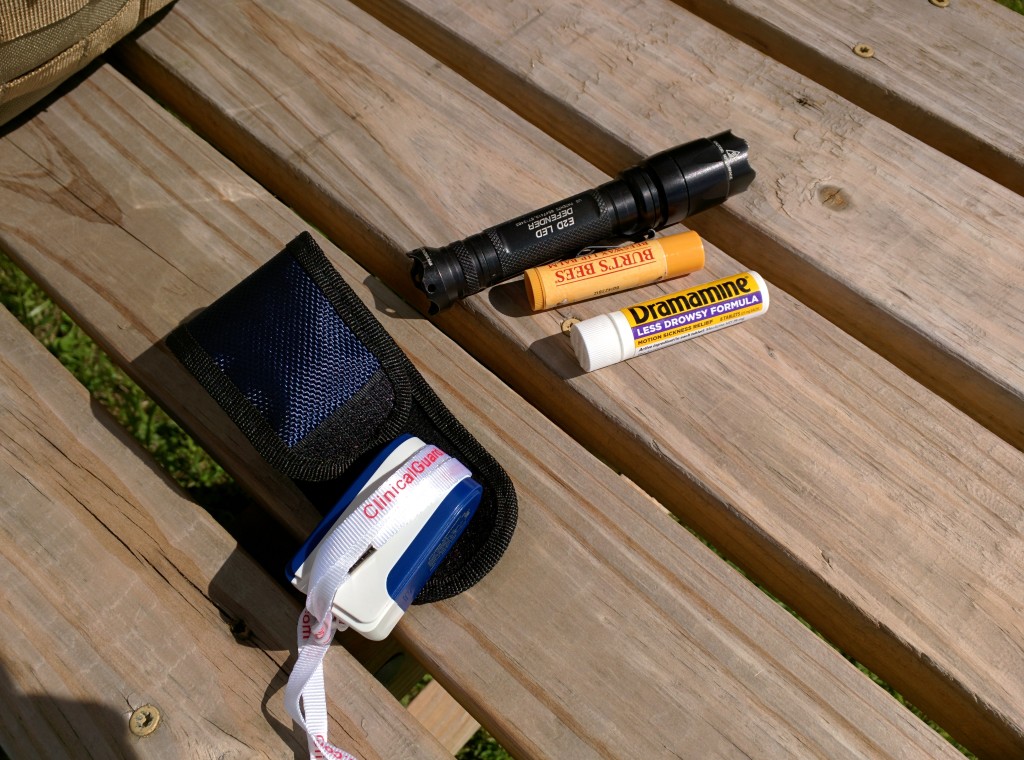
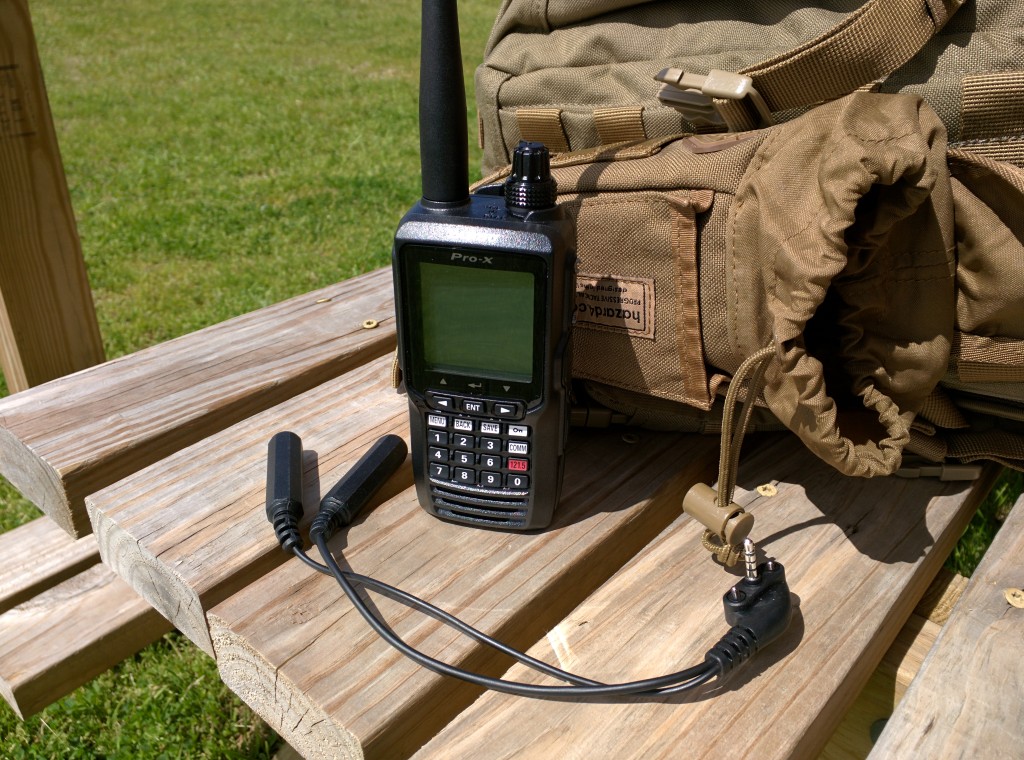
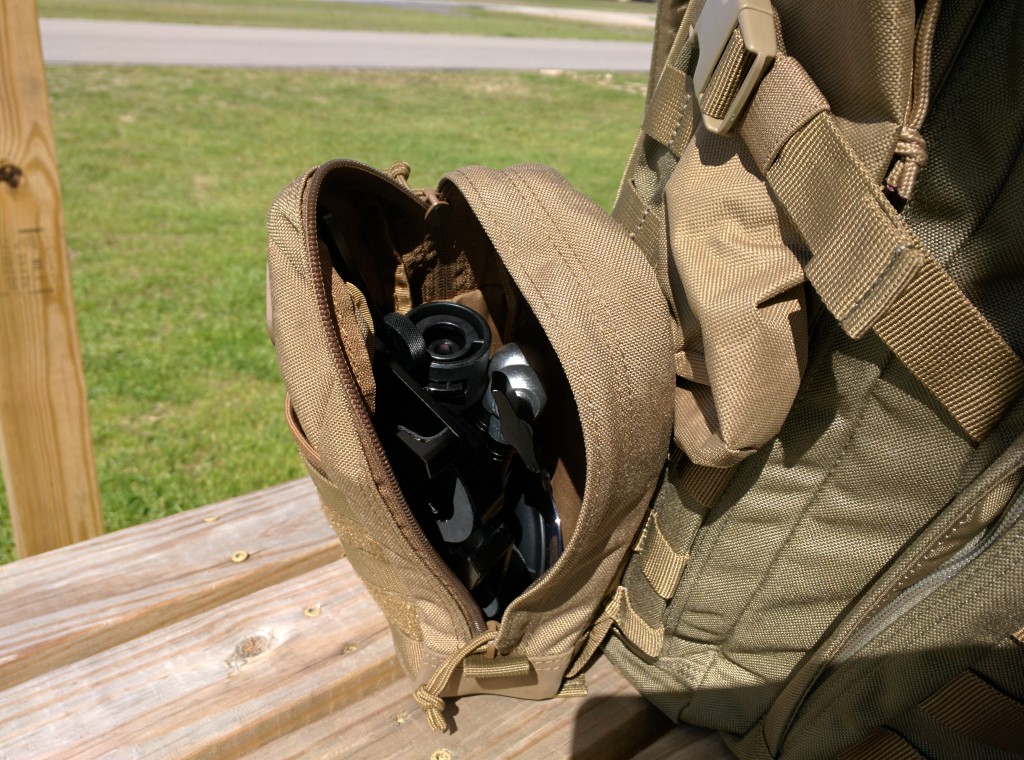

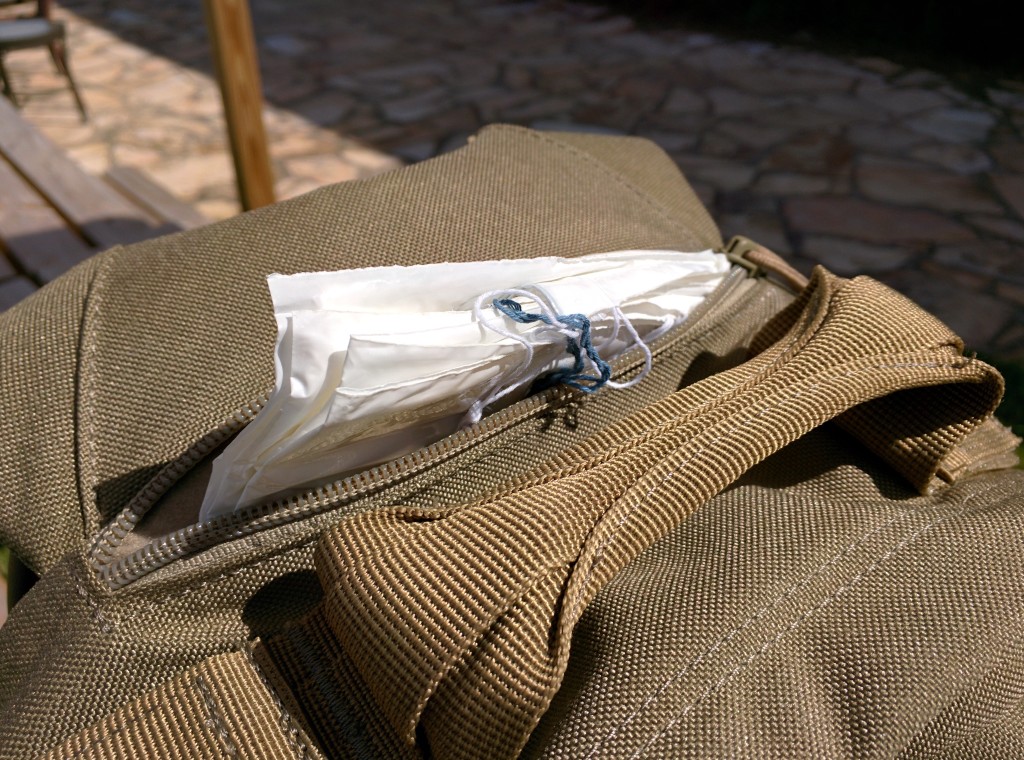
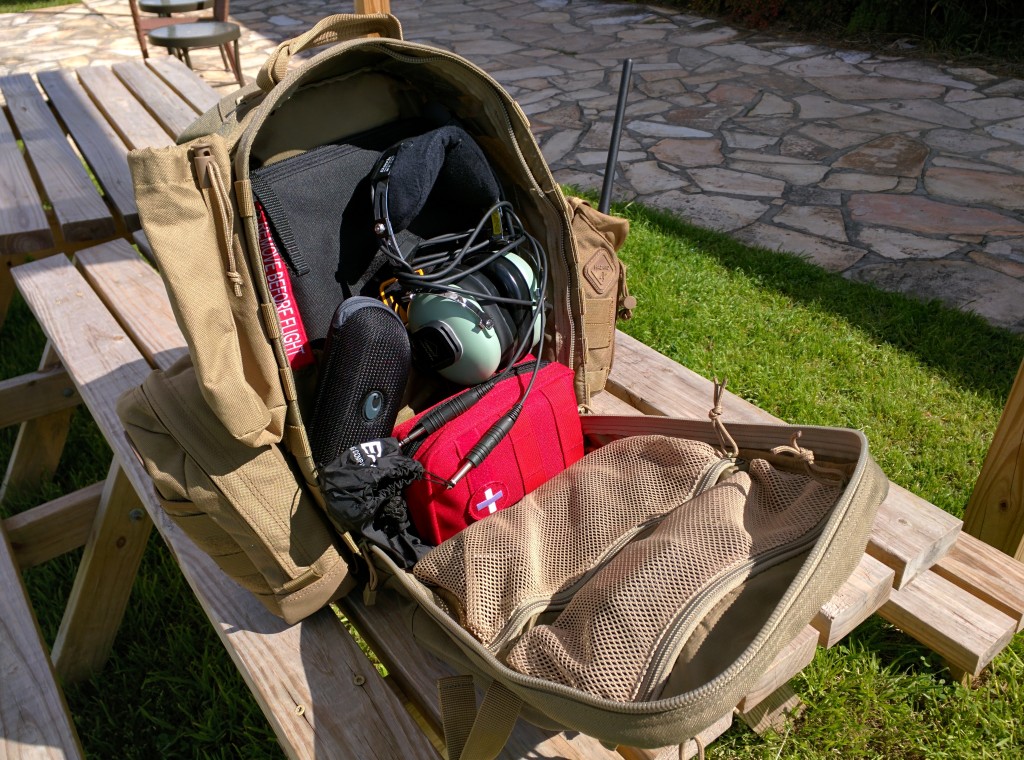
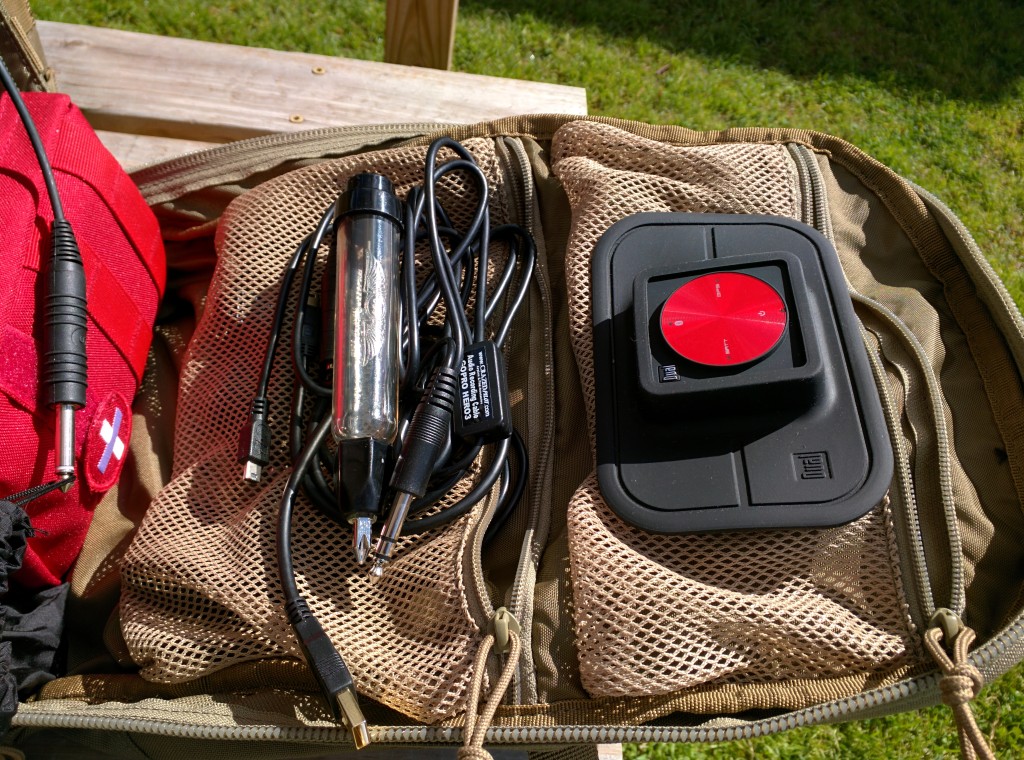
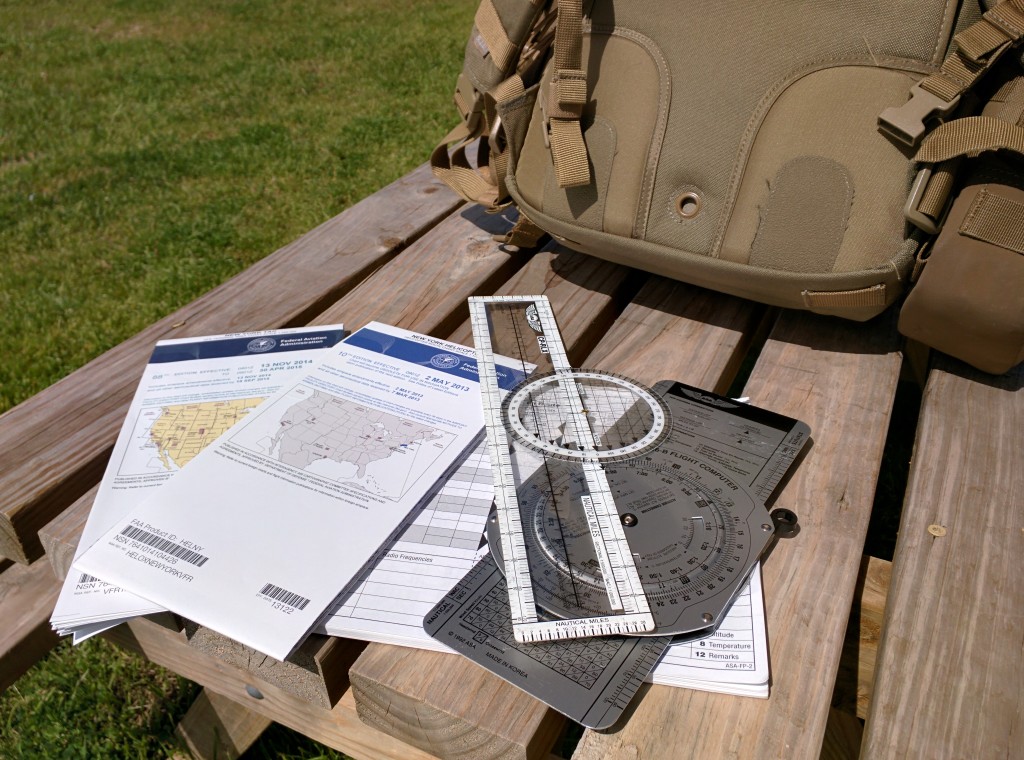
Depending on how much you want to pay, you could even be prepared for a fire. H3r performance makes some *very* lightweight (2.6lb) HalGuard (Halon blend) clean agent extinguishers: http://www.h3rperformance.com/hg100r.htm. They’re only B/C Rated (Fuel and electrical), but that’s mostly what you need in an aircraft anyways.
Im only 15 and working for my PPL everyone always has the i pad mini and i was wondering if there is a cheeper alternative like a samsung but I can still use foreflight.
Hey Daniel! ForeFlight is only available in the iPad, I asked and they don’t plan to do an Android version simply because there’s too much variation in the hardware and operating system to ensure that it runs properly.
If you’re looking to keep things inexpensive then I would recommend looking at Garmin Pilot on an Android tablet. I find that it’s actually easier to use than ForeFlight and has all of the same features, with the exception that you can’t use a Stratus — only Garmin’s proprietary ADS-B receiver. Still, you can buy an old Asus tablet and slap Garmin Pilot on there for way less than an iPad and FireFlight.
Did you ever do an article on the “2-Person Survival Kit” ? Would love to see whats in that!